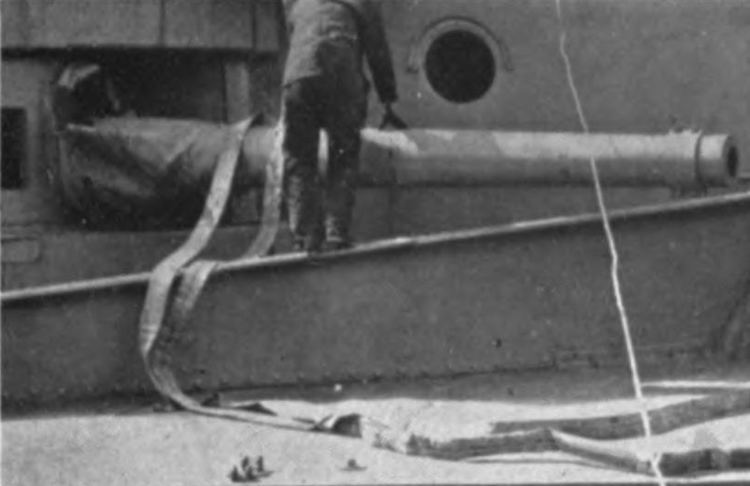Type Naval gun In service 1914–1945 Designer Vickers | Place of origin United Kingdom Used by British Empire | |
 | ||
Wars World War I
World War II | ||
The BL 6 inch Gun Mark XII was a British 45 calibres naval gun which was mounted as primary armament on light cruisers and secondary armament on dreadnought battleships commissioned in the period 1914 - 1926, and remained in service on many warships until the end of World War II.
Contents
Design
This was a high-velocity naval gun consisting of inner "A" tube, "A" tube, wound with successive layers of steel wire, with a jacket over the wire.
Naval service
It superseded the 45-calibres Mk VII gun and the longer 50-calibres Mk XI gun which had proved unwieldy in light cruisers due to its length, and was Britain's most modern 6-inch naval gun when World War I began.
It was superseded as secondary armament on new battleships in the 1920s by the 50-calibre 6-inch Mk XXII gun, and as main armament on new light cruisers in the 1930s by the 50-calibre 6-inch Mk XXIII gun.
Guns were mounted in the following ships :
Coast defence gun
During WWII some Mk XII guns were used in emergency coast defense batteries.
Notable actions
Ammunition
This gun generated a higher pressure in the chamber on firing compared to preceding 6-inch guns such as Mk VII and Mk XI. This necessitated use of special shells capable of withstanding a pressure of 20 tons per square inch on firing, which had "Q" suffixed to the name. World War I shells were marked "A.Q." denoting special 4 C.R.H. shells for this gun.
